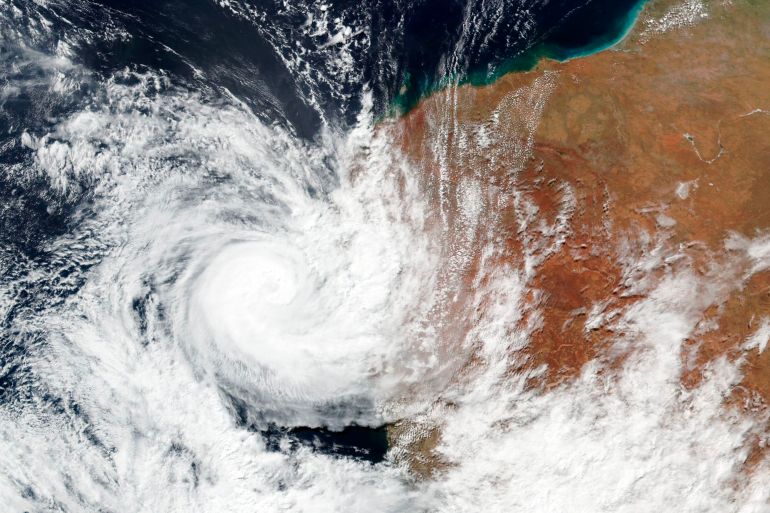Cyclone Seroja cuts power to thousands in Western Australia
Ferocious winds cause widespread damage to homes and buildings in towns unprepared for cyclones.

Tens of thousands of people in Western Australia were without power on Monday after a rare tropical cyclone tore roofs from homes and destroyed flimsily built houses as it crossed the coast on Sunday night.
Officials said approximately 70 percent of the structures in the coastal town of Kalbarri, about 500km (310 miles) north of state capital Perth, were damaged when the category three storm made landfall with winds at speeds of as much as 170km/h.
Keep reading
list of 4 itemsAustralia to end sexual harassment exemption for politicians
Australia-New Zealand travel bubble to begin on April 19
Australian couple released from detention in Myanmar
About 30 percent of the damage was “significant”, WA Emergency Services Commissioner Darren Klemm told the Australian Broadcasting Corporation. The area had not seen such a cyclone in at least 40 years, local media reported.
“The situation in Western Australia remains very serious,” Prime Minister Scott Morrison posted on his official Facebook page, adding the federal government’s disaster response plan had been activated.
The cyclone, named Seroja, was downgraded to a category two system after making landfall and finally moved back out to sea in the early afternoon, according to the Bureau of Meteorology (BOM) in Perth. Showers and gusty winds were expected to continue but not to be severe, it added.
The impact of Cyclone Seroja has devastated Kalbarri with 70% of the town impacted and the Iconic Carnarvon One Mile Jetty destroyed. We can. We will rebuild @TheNationalsWA #Wapol @briannadugan4 @westaustralian pic.twitter.com/qL2iixG6OO
— Vince Catania MLA (@VincentCatania) April 12, 2021
Photos on social media and local broadcasts showed fallen power cables, debris and houses stripped of roofs and walls. Western Australia state authorities opened three evacuation centres for displaced residents.
Ella Curic, who lives in Kalbarri, told the ABC that the town, a popular tourist spot, had been “flattened” by the cyclone. They had been sitting at the dining room table eating dinner when the neighbour’s roof “came through the window.
“The glass shattered, it all happened very quickly so we grabbed the children and got to the laundry,” Curic told the broadcaster. “It was insane. Timber was being impaled through the house. It was really unnerving.”
The region was on high alert for the storm, given that houses and other buildings were not constructed to withstand tropical cyclones, which usually do not occur so far south.
“This is a rare weather event for people in southern and eastern parts of WA,” the BOM said.